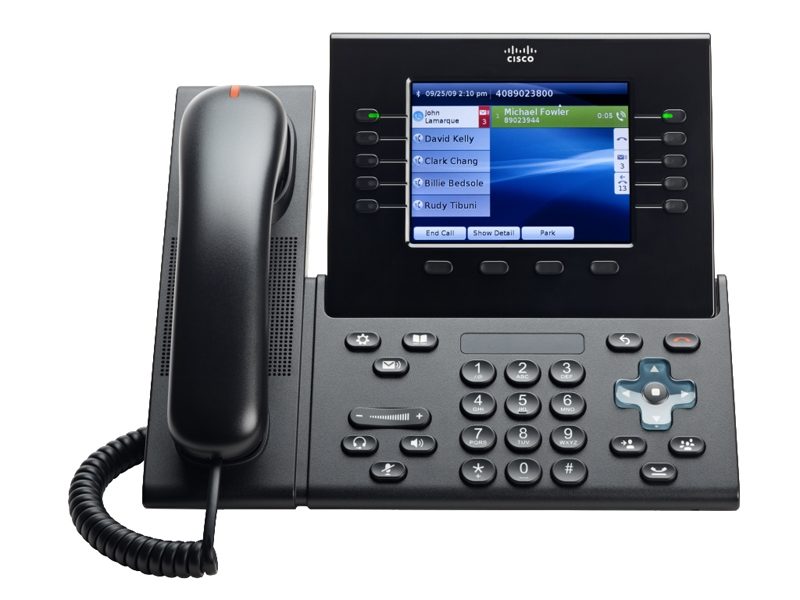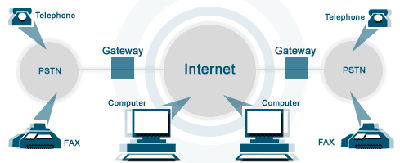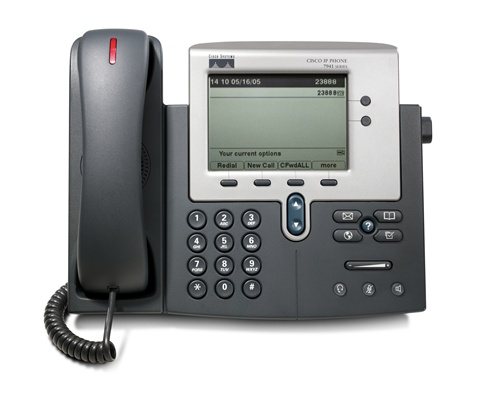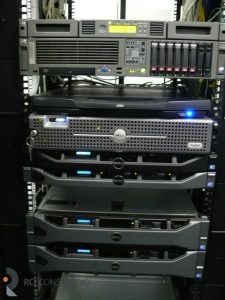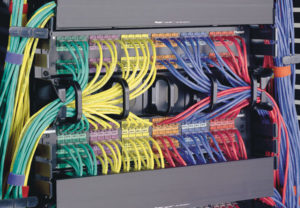IP-telephony and VoIP
 So, what is the IP-telephony? IP-telephony – a technology that ties together the advantages of telephony and the Internet. Until recently, circuit-switched networks (telephone networks) and packet-switched network (IP-network) exist almost independently from each other and used for various purposes. Telephone networks were used only for voice transmission, and IP-based networks – for data transmission. IP-telephony technology combines the network through a device called a gateway or gateway. A gateway is a device in which one side includes telephone lines and, on the other hand – IP-network (e.g., Internet).
So, what is the IP-telephony? IP-telephony – a technology that ties together the advantages of telephony and the Internet. Until recently, circuit-switched networks (telephone networks) and packet-switched network (IP-network) exist almost independently from each other and used for various purposes. Telephone networks were used only for voice transmission, and IP-based networks – for data transmission. IP-telephony technology combines the network through a device called a gateway or gateway. A gateway is a device in which one side includes telephone lines and, on the other hand – IP-network (e.g., Internet).
Broadly speaking voice in IP-based network is as follows. Incoming call and signaling information from the telephone network are transmitted to the network boundary device called a telephone gateway, and processed by a special card device voice services. Gateway control protocol using H.323 family, redirects the signal information to another gateway, located on the receiving side IP-based network. The receiving gateway transmits signal information to the receiving telephone equipment rooms according to plan, ensuring feedthrough. After establishing a connection on the input voice is digitized by a network device (if it was not digital) is coded in accordance with ITU standard algorithms, such as G.711 or G.729, compressed, encapsulated into packets and sent to the destination remote device using stack TCP / IP protocol. Coming to the receiving the IP-packets are converted back to the telephone signal and the receiving party receives the call. End-users services can not even guess at how to implement this call.
Since the IP-telephony call not involved international (long-distance) telephone operator, the cost of the call to order less than the cost of traditional telephone connection. coded in accordance with standard algorithms ITU, such as G.711 or G.729, compressed, encapsulated into packets and sent to the destination remote device using a TCP / IP protocol stack. Coming to the receiving the IP-packets are converted back to the telephone signal and the receiving party receives the call. End-users services can not even guess at how to implement this call.
However, the call Phone-to-Phone is the most obvious, but not the only service that can provide IP-telephony operator. Using IP-based network, you can share digital information to send voice or fax messages between two computers in real time. The use of Internet will implement this service on a global scale. For IP-telephony is most often used H.323 standard that defines the transmission of video and audio over networks with a non-guaranteed quality of service, such as Ethernet and IP. H.323 describes several elements, including audio and video codecs (coders / decoders), communication protocols, and packet synchronization.
Types of IP-telephony
Voice over IP-network can be implemented in various ways:
1. “Computer – computer” .
This embodiment is not an example of the IP-telephony, since only voice is transmitted over the data network, without going to the telephone network. For traffic organization user purchases the necessary equipment and software, as well as paying for the service provider link service. The advantage of this embodiment is to maximize savings. The disadvantage – the minimum communication quality.
2. “Phone – Phone” .
For the organization of such a connection requires a specific network devices and mechanisms of interaction. Voice traffic is transmitted across the IP-network, usually on a separate portion expensive. Devices which interact are gateways, docked on the one hand, with the public switched telephone network and on the other – with the IP-network. Voice communication in this mode, as compared to the embodiment of “computer – the computer”, is more expensive, but the quality of it is much higher and it is more convenient to use. To use this service, it is necessary to call the provider, serving gateway, enter a phone code and the local phone number and talk in the same way as in the conventional telephony. All necessary operations perform call routing gateway.
3. “Computer – Telephone” .
This opens up greater opportunities for corporate users, as is most commonly used corporate network serving calls from computers to the gateway, which has then passed on the public telephone network. Enterprise solutions using communication “computer-to-phone” can help save money and the necessary equipment will be discussed below. The end user, no additional equipment is required. Enough to have a handy phone with tone dialing. This is to ensure that, phoned to the operator, enter your code in the tone mode, and then the action the subscriber does not differ from the usual. Most modern phones, including payphones and mobile phones, this function is provided. If for some reason there is no phone.
4. “WEB – phone”.
Another new service that provides IP-telephony providers – is a call to Web Site or Surf & Call – VocalTec’s solution in Web telephony, to make calls by selecting from an Internet page a link to the caller’s name. This solution is aimed primarily at increasing the capability of e-commerce. Surf & Call allows Internet users to directly talk to, for example, a sales representative or a support specialist interest of his company. Connecting the phone when you press the cursor on the link, which is a, for example, company name, name of the called party, and so on. D. On the web page. In this case the user does not need a second phone line or the interruption of the Internet, you need only download a small client software, which can usually be found on the same WEB-page, and is installed automatically. On the other hand Surf & Call allows company representatives to answer questions, demonstrate WEB-pages, transmit necessary information.
Advantages of IP-telephony
Cheaper phone calls.
The introduction of VOIP technology in the framework of a computer network can reduce the total costs associated with the conduct of international and long-distance telephone calls, and also to begin the process of migrating to packet technology media. Moreover, given the opportunity to enter the local telephone network, the use of this technology can minimize the rent ordinary telephone lines.
Better quality of communication.
the communication quality can be estimated using the following main characteristics: the level of voice distortion; frequency “failure” voice packets; delay time (between the first subscriber uttering phrases and the moment when it is heard by the second subscriber). For all these characteristics of the quality of communication has increased significantly compared to the first versions of IP-telephony solutions that allow distortion and interruption of speech. Improve voice encoding and recovery of lost packets allowed to reach the point where it is understood subscribers so well that the sides do not realize that the connection is on an IP-telephony technology. It is understood that the delay affect the pace of the conversation. It is known that for a person to delay 250 milliseconds, is practically imperceptible. IP-telephony solutions available to date do not exceed this limit, so that the conversation is actually no different from the connection of a conventional telephone network. In addition, delays are reduced due to the following three factors:
- Firstly, improving the telephone servers (their designers are struggling with delays, improving the operation of the algorithm).
- Second, develop private (corporate) network (their owners can control the bandwidth and consequently the amount of delay).
- Third, developing the Internet itself – modern Internet was not designed for communication in real-time. The Internet Engineering Task Force (IETF), together with the operators of Internet networks offer new technologies, such as Reservation Protocol (RSVP), which allows to reserve bandwidth.
Integration of branches into a single information structure.
Recently, with the development of information technologies and increasing bandwidth for all the channels most operational solutions business objectives of the company branches are combined into one, forming an intranet. Since the proposed technology uses voice just a data network, it becomes possible to combine not only the computer network, but also the telephone.
Virtual Private Networks (VPN).
IP-telephony is the ideal technology for virtual private enterprise networks. The main feature of VPN technology – the use of IP-based network as the backbone for the transmission of IP-traffic enterprise. VPN network connection solve the problem of the corporate user to a remote network and connecting multiple remote LANs and PBXs into a single corporate voice and data network.
Global roaming.
IP-telephony allows operators to very simply and cost-effectively organize roaming communication services. This is especially true for mobile operators – solution based on IP-telephony technology, an order of magnitude cheaper than traditional, and has much greater flexibility.
Shared Internet Access.
The voice data, facsimile messages are transmitted using IP – the basic set of Internet protocols, the decision itself implies access to network resources and the obvious savings on line rental and fees.
The minimum investment in equipment.
If you use the equipment Cisco Systems, meeting all modern standards, then you will not need to resort to any costs or additional equipment, such as telephone and switching. Additionally, Cisco products has the flexibility and scalability that is, to increase capacity, performance, and functionality can be gradually, responding to evolving needs.
What is the difference SIP-telephony on IP and VoIP
Thus, SIP (Session Initiation Protocol) – transfer protocol. It can be compared with a language that helps the devices understand each other and exchange data without errors. It is used for a variety of purposes – for IP-telephony, video and audio conferencing, and even online games. Simply put, it works on a “client-server”, continually alternating between requests and responses.
It happened so often that word is sometimes called SIP technology calls via the Internet as a whole. The question then becomes: SIP and IP-telephony – what’s the difference? The difference is that a SIP-telephony – a connection via the Internet only using this particular protocol. For example, it uses Skype.
There are other protocols for IP-telephony. But nowadays SIP – it is a universal standard for exchanging data over the network. Experts consider it the most promising, and it is most often used. SIP-telephony available wherever there is internet access at speeds of at least 64 Kbps. That is just about everywhere.
IP-telephony allows you to tie a room not to the location, but to a specific user, and it offers great opportunities, such as analytics. After all, so the customer can find out much more. In particular, this technology is the basis of tracking calls – call tracking.
How can I make and receive calls using the SIP:
- with a computer or laptop, if you install it on a special program (SIP-client) and to equip it with an earphone and a microphone;
- via WI-FI or 3g / 4g via SIP-software for tablets and mobile phones;
- using a special stationary SIP-phone, which is included in the router;
- connect a regular phone to the VoIP-gateway, and the gateway – to the router
Summary
IP-telephony – a perfect solution for the start of business and companies that practical approach to business processes. This is not only an opportunity to save money, but also enhance the level of customer service, as well as to build a full-fledged analyst for the company. That is why IP-telephony is gaining popularity among business customers.


